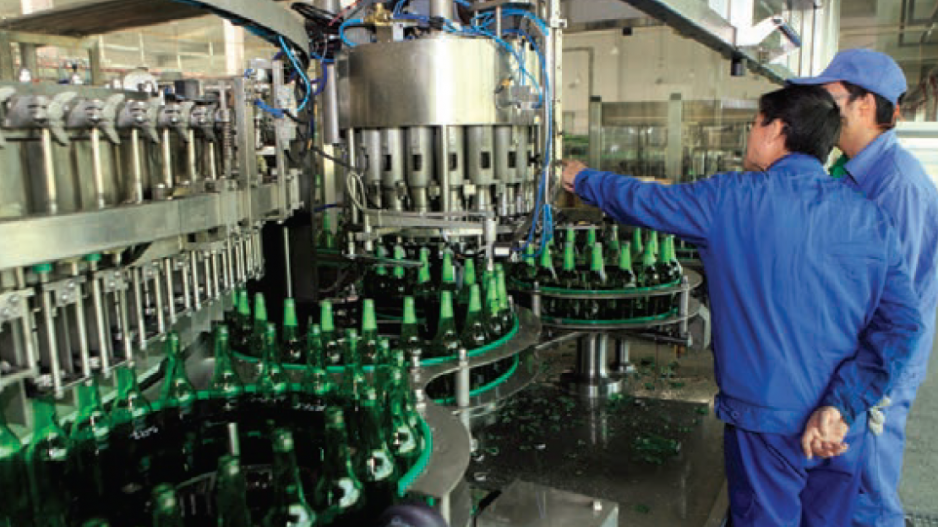Chinese brewers are at the dawn of a golden age of multi-year profit growth, according to market analysts, who flagged improving fundamentals and tactical trading opportunities in the sector.
The top five brand names in China by market share are China Resources Beer at 24.6%, Tsingtao Brewery at 17.9%, Budweiser at 15.7%, Yanjing Brewery at 10% and Carlsberg Group at 5%, according to data from Euromonitor.
Large brewers in China are expected to continue with their strategy of growth by acquisition, with companies such as China Resources Beer likely to seek out acquisition targets in domestic and international markets.
“We believe that large-scale mergers and acquisitions are likely to materialize in the next three years, which also offers investment opportunities,” said Charlie Chen, an analyst at Deutsche Bank, in a recent report. “While we suggest that investors take long positions on high-quality brewers ... investors could also trade around M&A news to take short-term returns.”
Domestic acquisition targets include state-owned breweries that have good brands and solid balance sheets but are experiencing margin deterioration due to poor management.
“Consolidation in the Chinese beer market seems unavoidable, and we see a high chance that the current big five may eventually become a big three,” Chen said.
CITIC Securities analyst Dai Jiaxian said the landscape among brewers could be described as fiercely competitive, with the major companies roughly equal in market share.
He noted changes that would disrupt the status quo, including the question of who would buy a 20% stake in Tsingtao Brewery, which Japanese brewer Asahi is reportedly selling.
“The changes in major players can more than reshuffle the management and operations of companies involved,” Dai said.
As the Chinese beer market becomes more product- and brand-driven, the gap between large, national players and smaller competitors is likely to widen.
Among favoured companies in the sector, Chen highlighted China Resources Beer because of the company’s management, which he labelled “superior.” He also noted the company’s ability to raise beer prices and the ability to uncover future cost savings from operations.
“We like China Resources Beer the best,” Chen said.
Deutsche Bank forecasts beer consumption in China by volume will expand 1.9% annually from 2016 through 2020.
In recent years beer consumption has been falling owing to factors such as the anti-corruption movement, which curbed expenditure by government officials on entertainment and dining. Changing consumer preferences, including a switch to premixed alcoholic beverages sold through convenience stores, was also cited by Chen as a factor affecting beer sales.
Meanwhile, CITIC Securities’ Dai expects organic growth in China’s beer industry but acknowledged that some of the growth would go towards imported beer and China-made craft beer.
Still, Dai noted that the trend would be a positive for China-based brewers, particularly those that collaborate with foreign brands to provide high-end beers.
He noted that the craft beer market in China looks set for growth, thanks to higher prices, typically four to five times those of typical mass-market brands. Craft beer sales deliver net profits of around 30%, he said.•
Read the original story on the South China Morning Post.




